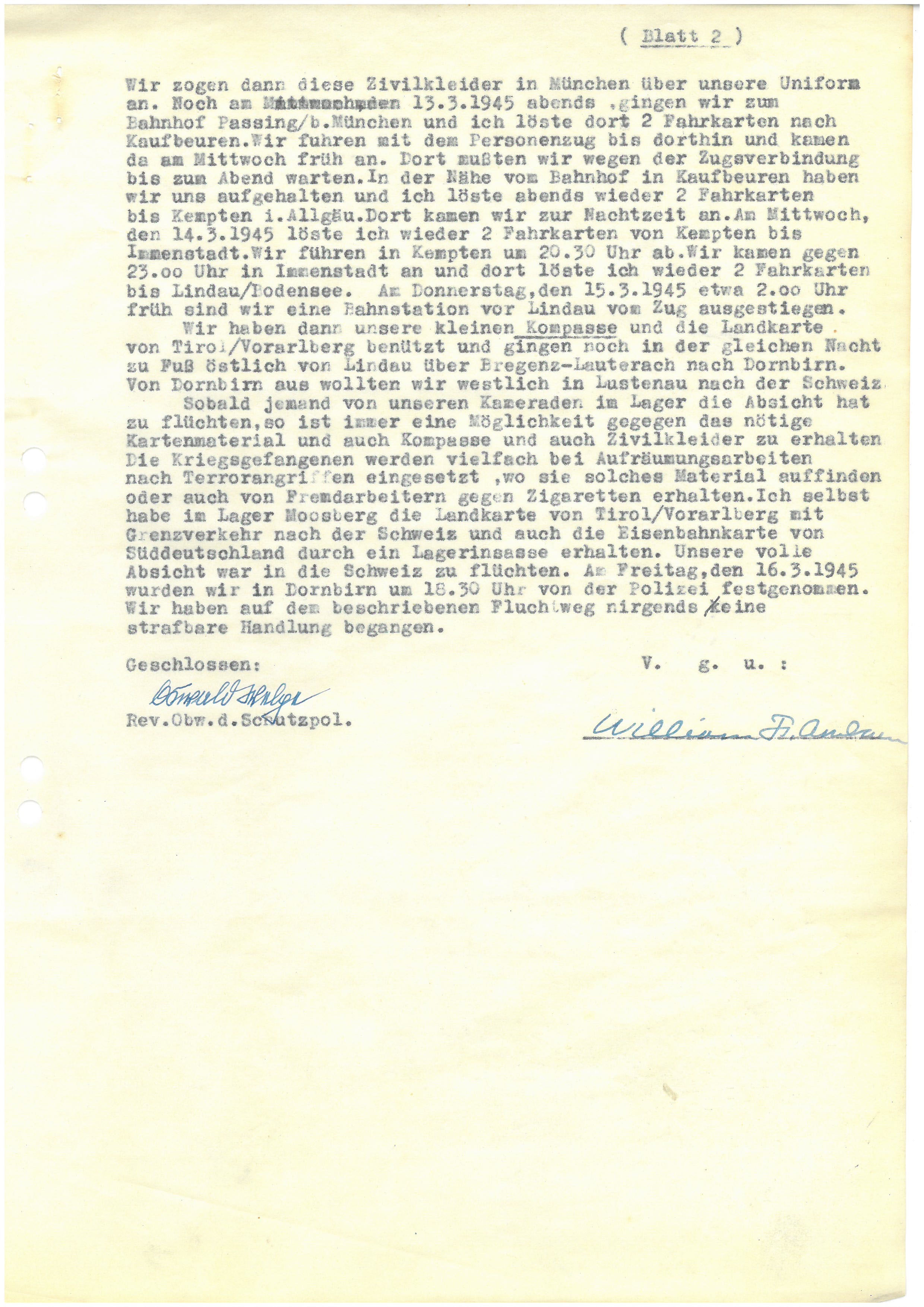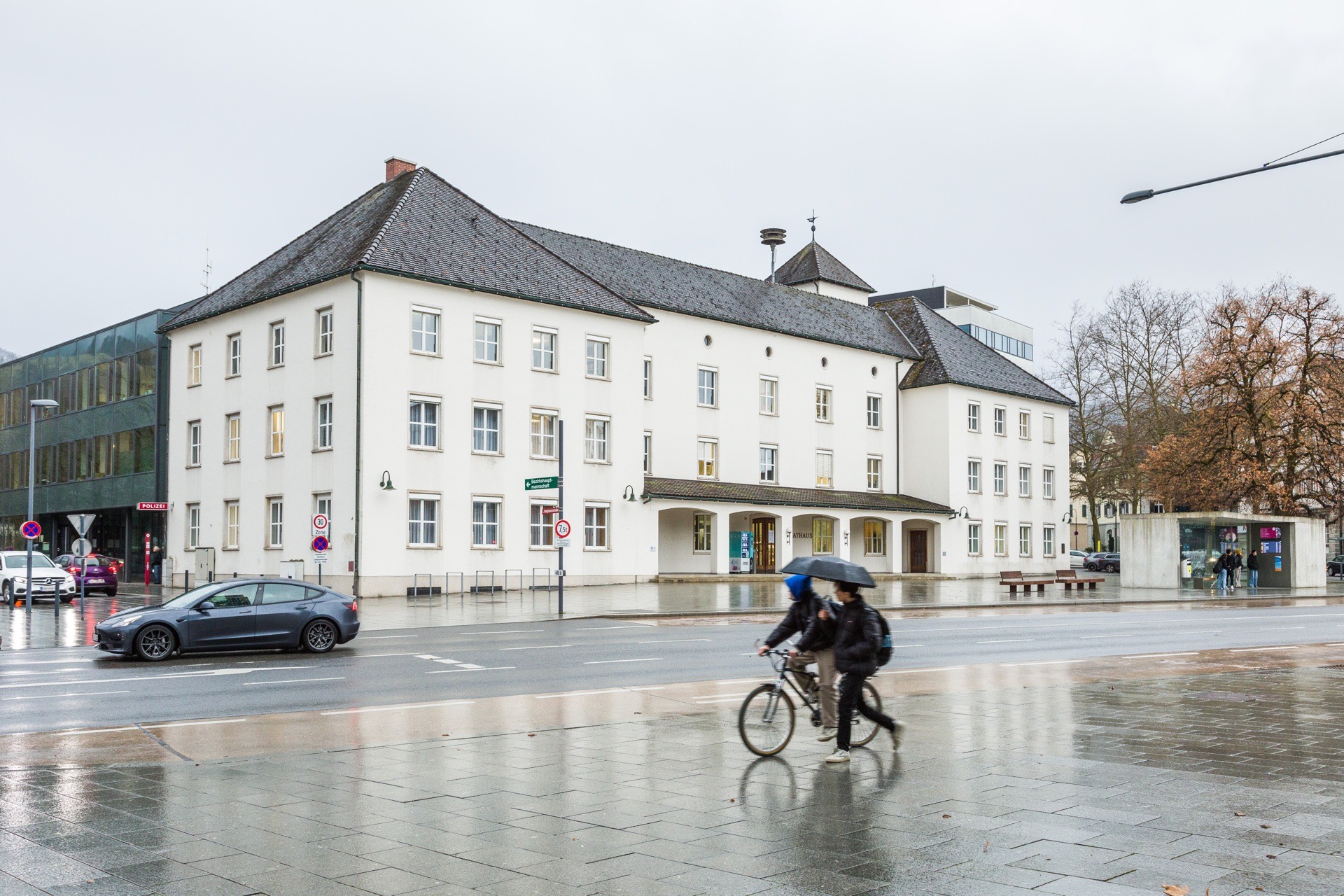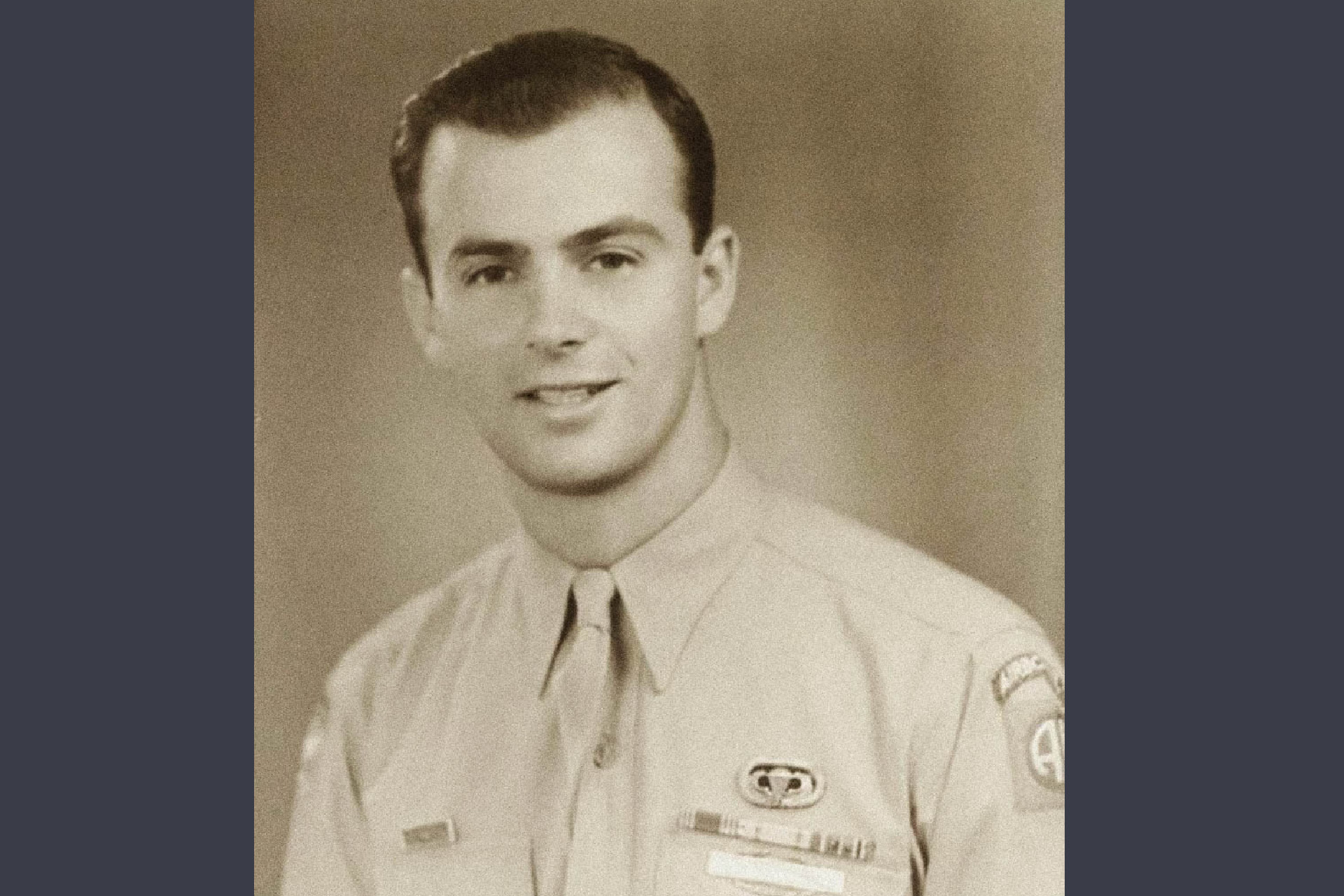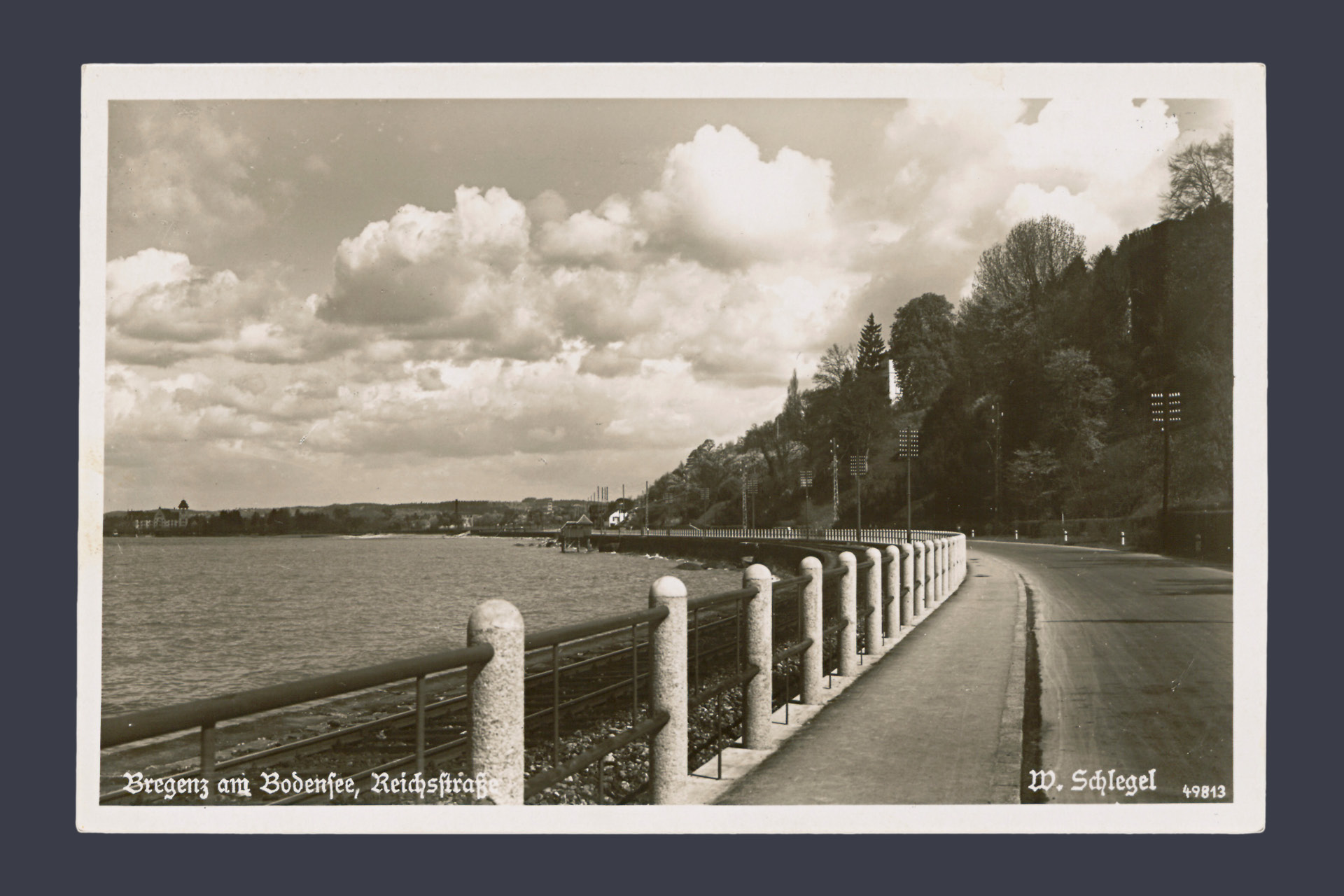William Amburn and William Kanos> March 16, 1945
2 William Amburn and William Kanos
Two Americans only get as far as Dornbirn
Dornbirn/Bregenz, March 16, 1945
“Subject: Seizure and arrest of 2 American prisoners of war on March 16, 1945 by SS-Ustuf (Untersturmführer) Meister d(er) Sch(utzpolizei) Luger in Dornbirn.
Interrogation record
Presented to the police is the arrested prisoner of war William F. Amburn (Privat=Gefreiter), born on 21.11.1921 in Maryville, Tennessee U.S.A., Protestant, single, farmer.
... allegedly escaped from Munich on 13.3.1945, partly by train, partly on foot from the camp Moosburg/northeast of Munich and wanted to go to Switzerland. The prisoner had a map of Vorarlberg with border traffic to Switzerland on him, additionally a railroad map of southern Germany and two escape sketches and allegedly fled because of a lack of food. He has a command of German and his native language is English.”[1]
At the “Schutzpolizei” police station in Dornbirn two American soldiers are being questioned. A day earlier they had marched in the middle of the night from Lindau, past the military bath, to Bregenz. And from there on to Dornbirn. There they are arrested.
The two GIs, William F. Amburn and his comrade William J. Kanos, had fallen into German hands during the Battle of the Bulge in Belgium. As prisoners of war, they were interned in Stammlager VII A in Moosburg on the Isar River northeast of Munich.
During his interrogation in Dornbirn, William Amburn gives a detailed account of their attempted escape: he describes how the prisoners of war of Stalag VII A were used for clean-up works after air raids, or even in agriculture, and how easily cards, compasses and civilian clothes could be organized on these occasions by foreign workers in exchange for cigarettes or even by chance. The last time Kanos and he had worked was on March 13, 1945, in a station building near Munich that had been damaged by bombs.
Not only out of a sense of duty as soldiers, but also because of great hunger, they had decided to flee. The German guards had only paid attention to the front entrance of the building.
They had already hidden civilian clothes under their army uniforms in the camp – and thus had walked to Munich. In Munich-Pasing, Amburn had bought two tickets to Kaufbeuren. There they changed for a train to Kempten, then to Immenstadt and from there on to Lindau. Around 2.00 a.m. on March 15, Amburn states, they got off shortly before Lindau and continued on foot to Bregenz – and from there via Lauterach to Dornbirn. Their plan to escape to Switzerland via Lustenau failed, however. On March 16 at 6.30 p.m. they were arrested in Dornbirn, Brückengasse.
[1] Old files of the municipal administration, Dornbirn municipal archives: AT-StAD. 16.013. folder 147.


2 William Amburn and William Kanos
Two Americans only get as far as Dornbirn
Dornbirn/Bregenz, March 16, 1945
“Subject: Seizure and arrest of 2 American prisoners of war on March 16, 1945 by SS-Ustuf (Untersturmführer) Meister d(er) Sch(utzpolizei) Luger in Dornbirn.
Interrogation record
Presented to the police is the arrested prisoner of war William F. Amburn (Privat=Gefreiter), born on 21.11.1921 in Maryville, Tennessee U.S.A., Protestant, single, farmer.
... allegedly escaped from Munich on 13.3.1945, partly by train, partly on foot from the camp Moosburg/northeast of Munich and wanted to go to Switzerland. The prisoner had a map of Vorarlberg with border traffic to Switzerland on him, additionally a railroad map of southern Germany and two escape sketches and allegedly fled because of a lack of food. He has a command of German and his native language is English.”[1]
At the “Schutzpolizei” police station in Dornbirn two American soldiers are being questioned. A day earlier they had marched in the middle of the night from Lindau, past the military bath, to Bregenz. And from there on to Dornbirn. There they are arrested.
The two GIs, William F. Amburn and his comrade William J. Kanos, had fallen into German hands during the Battle of the Bulge in Belgium. As prisoners of war, they were interned in Stammlager VII A in Moosburg on the Isar River northeast of Munich.
During his interrogation in Dornbirn, William Amburn gives a detailed account of their attempted escape: he describes how the prisoners of war of Stalag VII A were used for clean-up works after air raids, or even in agriculture, and how easily cards, compasses and civilian clothes could be organized on these occasions by foreign workers in exchange for cigarettes or even by chance. The last time Kanos and he had worked was on March 13, 1945, in a station building near Munich that had been damaged by bombs.
Not only out of a sense of duty as soldiers, but also because of great hunger, they had decided to flee. The German guards had only paid attention to the front entrance of the building.
They had already hidden civilian clothes under their army uniforms in the camp – and thus had walked to Munich. In Munich-Pasing, Amburn had bought two tickets to Kaufbeuren. There they changed for a train to Kempten, then to Immenstadt and from there on to Lindau. Around 2.00 a.m. on March 15, Amburn states, they got off shortly before Lindau and continued on foot to Bregenz – and from there via Lauterach to Dornbirn. Their plan to escape to Switzerland via Lustenau failed, however. On March 16 at 6.30 p.m. they were arrested in Dornbirn, Brückengasse.
[1] Old files of the municipal administration, Dornbirn municipal archives: AT-StAD. 16.013. folder 147.






